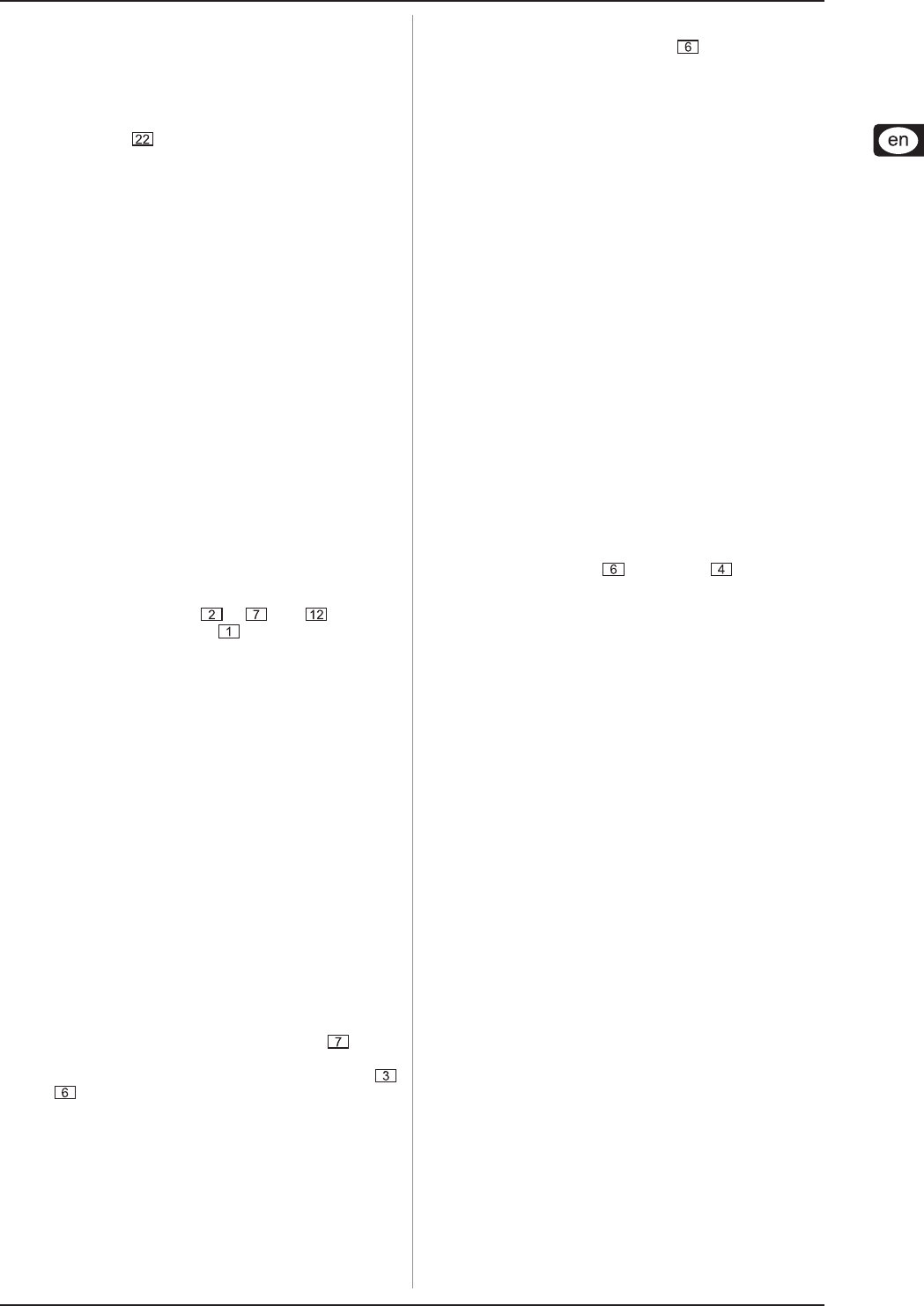
11
U-CONTROL UMA25S
5. UMA25S as USB/MIDI controller
5. UMA25S as
USB/MIDI controller
At the highest control level of the U-CONTROL, you play and
control the MIDI data (Play Mode). The UMA25S has an array of
control elements with which you can control your MIDI equipment
via the MIDI output or with which you are able to control
your computer applications via USB (using the MIDI standard).
Most Digital Audio Workstations (DAWs) are capable of receiving
control data according to MIDI specifications.
The controls comprise keyboard, Pitch Bend and Modulation
wheel, Volume control slider, 8 rotary knobs, 8 push buttons as
well as Sustain and Expression pedals.
Display:
The current firmware version appears on the screen as soon as
the keyboard is switched on, after which the current preset
number is shown. When moving a control element, the value
changes are displayed.
Control elements:
It is possible to use more than one button, knob, slider, etc., at the
same time and that their data are simultaneously sent via MIDI.
In principle, there are two options for assigning control elements:
V You are using one of the presets with the default controller
configuration (see Table 7.3). In this case, you need to
specify the assignments on the receiving device.
V You are you using your own controller configuration that
you created in Edit Mode. Find out how to make assignments
on the UMA25S in Chapter 5.4.
The following gives you a detailed description on how to use the
UMA25S. Please note the difference that is made between push
buttons (see control elements – and ) and keys
on the keyboard (control element )! Please do not confuse
these two control elements!
5.1 Presets
The UMA25S has 16 memory locations to store your own presets.
You can find the settings of the default presets (Table 7.4) in the
appendix. The most recently used preset is loaded when the
device is switched on.
5.1.1 Loading presets
There are several ways to load a preset:
Selecting presets directly:
V Press the PRESET push button for a second and select the
preset you want to use with the push buttons E1 – E8. The
new preset number is shown on the display.
or:
V Press and hold down the PRESET push button while pressing
the key (1 – 8) with the number of the preset you want to
use. The new preset number is shown on the display.
Selecting presets by manually stepping up or down:
V Select a preset with the +/– push buttons ( ) found
below the display. The new preset number is shown on
the display. Make sure that none of the push buttons
to (MMC, MUTE, PRESET, EDIT) are pressed.
or:
V Press and hold down the PRESET push button while turning
one of the rotary knobs E9 – E16. The preset number is
shown on the display. As soon as you press the PRESET
push button a second time (LED goes out), the new preset is
activated.
5.1.2 Storing presets
1. Press the EDIT/EXIT push button for a second.
2. Press the key with the STORE function. “Str” appears on
the display, representing the Store function.
3. Press one of the 8 push buttons E1 – E8 or turn one of the
rotary knobs E9 – E16 to select the memory location in
which you want to store your preset.
4. Press the ENTER key to confirm.
You can also select the memory locations 1 to 8
using your keyboard (keys labeled with the
numbers 1 – 8). The memory locations 9 to 16 can
only be selected using the rotary knobs.
The EDIT LED goes out.
V If you want to overwrite the current preset, press the
STORE key and then the ENTER key (skip step 3).
V You can cancel the storing process by pressing the EXIT
push button.
We intentionally did not include an auto-store function. This way
you can assign a different MIDI message to a control element
without changing the current preset. If you want to restore a
preset, simply load another preset and then return to the old
preset. All data have now been restored, including the default
function of the control element that had been changed for the
time being.
5.1.3 Restoring default presets
1. Press the EDIT/EXIT and MUTE push buttons
together. The display shows “GLb” (for Global Mode).
2. Turn the E14 rotary knob. The display shows “FAC” (for
Factory Reset).
3. Press the ENTER key to confirm.
Caution! With Factory Reset, all configured data and
user presets are irreversibly deleted! To avoid an
accidental deletion, save your presets by sending
a SysEx dump to your computer beforehand (see
Chapter 5.7).
V You can cancel the process by pressing the EXIT push
button.
5.2 Real-time control using the control elements
The UMA25S’ possibilities of application are extremely versatile.
The following gives a couple of general instructions and examples
to help you get started as quick as possible.
What exactly does the UMA25S do?
Simply put, it’s a remote control for all kinds of MIDI equipment.
An entire array of control messages can be generated by the
keyboard, slider, rotary knobs and push buttons as well as the
foot pedals. These control elements allow you to control various
functions of external devices (hardware and software) in real
time. That’s particularly the case with software mixers, sound
generators and effects. The software applications are often
copies of “real” gear—their functionality simulated and displayed
on the computer.
What can I control with the UMA25S?
Basically, you can control any device that is MIDI compatible.
Both hardware and software MIDI devices are controlled in exactly
the same way. The only difference between them is the wiring.


















